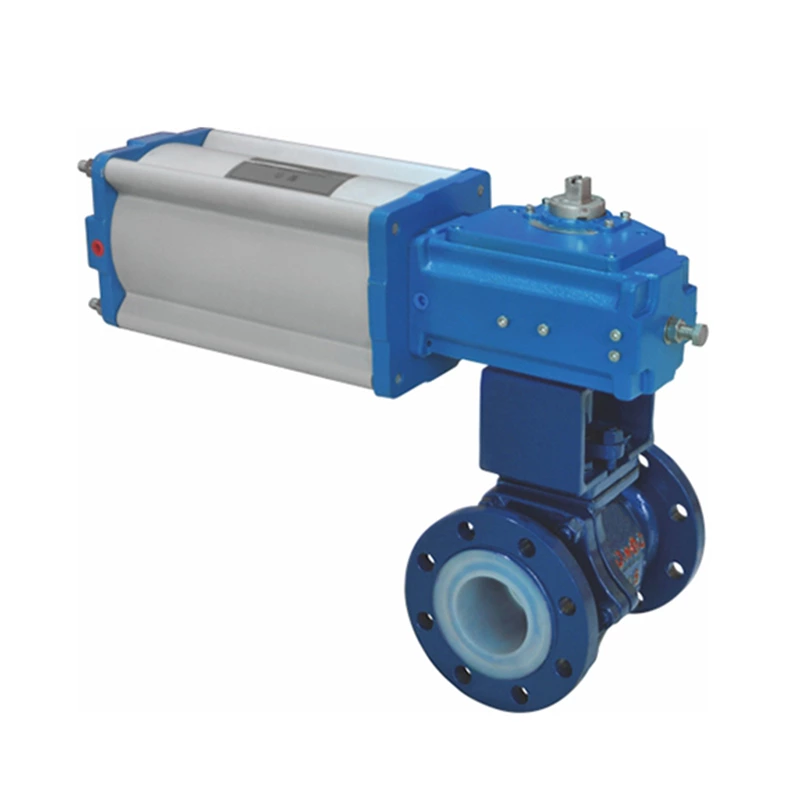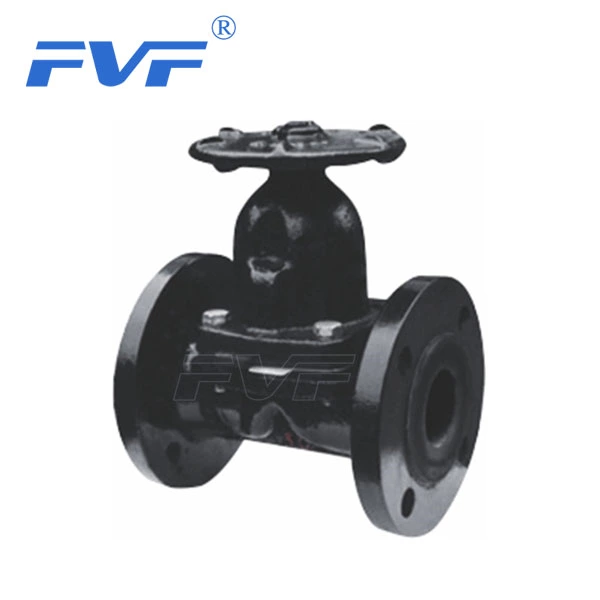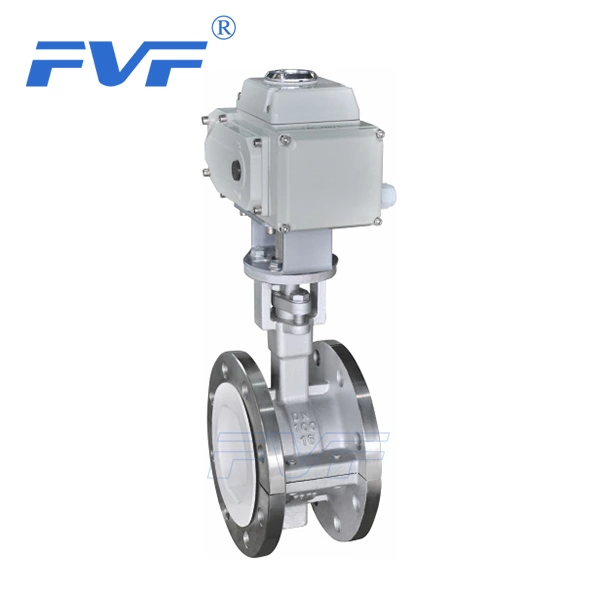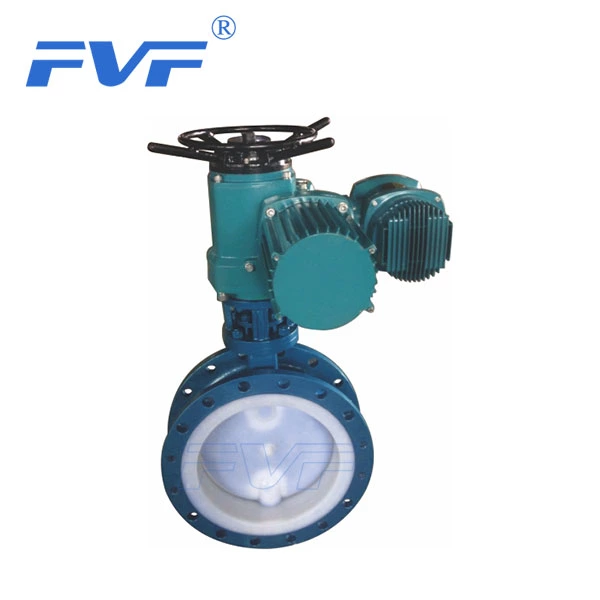Development And Principle Of General Equipment Valves
Lined Butterfly Valve is a device used to control the flow, pressure and direction of fluid. The controlled fluid can be liquid, gas, gas-liquid mixture or solid-liquid mixture.
The valve is usually composed of a valve body, a valve cover, a valve seat, an opening and closing part, a driving mechanism, a seal and a fastener. The control function of the valve is achieved by driving the opening and closing part to lift, slide, swing or rotate by the driving mechanism or fluid to change the size of the flow channel area.
The use of valves is very wide, and it is closely related to people's daily life. For example, faucets for tap water pipes and pressure reducing valves for liquefied petroleum gas stoves are valves. Valves are also indispensable components of various mechanical equipment such as internal combustion engines, steam engines, compressors, pumps, pneumatic transmission devices, hydraulic transmission devices, vehicles, ships and aircraft.
Two thousand years ago, the Chinese used bamboo tubes and wooden plug valves on water pipelines, and later used sluices on irrigation channels, plate check valves on bellows for smelting, and bamboo tubes and plate check valves to extract brine in well salt mining.
With the development of smelting technology and hydraulic machinery, copper and lead plug valves appeared in Europe. With the use of boilers, lever-weight safety valves appeared in 1681. Before the appearance of Watt's steam engine in 1769, plug valves and check valves were the main valves.
The invention of the steam engine brought valves into the field of mechanical industry. In addition to plug valves, safety valves and check valves, butterfly valves were also used on Watt's steam engine to adjust the flow. With the increase of steam flow and pressure, the use of plug valves to control the steam inlet and exhaust of steam engines could no longer meet the needs, so slide valves appeared.
Around 1840, stop valves with threaded valve stems and wedge-type gate valves with trapezoidal threaded valve stems appeared successively, which was a major breakthrough in the development of valves. The emergence of these two types of valves not only met the requirements of various industries for increasing pressure and temperature at that time, but also initially met the requirements for flow regulation. Since then, with the development of the power industry, petroleum industry, chemical industry and shipbuilding industry, various high and medium pressure valves have developed rapidly.
After World War II, due to the development of polymer materials, lubricating materials, stainless steel and cobalt-based hard alloy, the old plug valve and butterfly valve have gained new applications, and ball valves and diaphragm valves have developed rapidly. The variety of stop valves, gate valves and other valves has increased and the quality has improved. The valve manufacturing industry has gradually become an important department of the machinery industry.
Valves can be divided into six categories according to their functions: shut-off valves, regulating valves, check valves, diverter valves, safety valves, and multi-purpose valves.
The cut-off valve is mainly used to cut off the fluid passage, including stop valve, gate valve, plug valve, ball valve, butterfly valve, diaphragm valve, pinch valve, etc.; the regulating valve is mainly used to adjust the pressure and flow of the fluid, including regulating valve, throttle valve, pressure reducing valve and float regulating valve, etc.; the check valve is used to prevent the reverse flow of the fluid; the diverter valve is used to distribute the passage direction of the fluid, or to separate the two-phase fluid, including slide valve, multi-way valve, steam trap and air exhaust valve, etc.; the safety valve is mainly used for safety protection to prevent the boiler, pressure vessel or pipeline from being damaged due to overpressure; the multi-purpose valve is a valve with more than one function, such as the stop check valve, which can both cut off the flow and check the flow.
Industrial pipeline valves can be divided into vacuum valves, low-pressure valves, medium-pressure valves, high-pressure valves and ultra-high-pressure valves according to the nominal pressure; valves can be divided into normal temperature valves, medium-temperature valves, high-temperature valves and low-temperature valves according to the working temperature; valves can also be classified according to the type of drive device, the connection method with the pipeline and the material used for the valve body. Valves can be named individually or in combination according to various classification methods, or they can be named according to the structural characteristics of the opening and closing parts or their specific uses.
The basic parameters of valves are working pressure, working temperature and caliber. For various valves used in large quantities in industrial pipelines, nominal pressure and nominal diameter are often used as basic parameters. Nominal pressure refers to the maximum working pressure that a valve of a certain material is allowed to withstand at a specified temperature. Nominal diameter refers to the nominal inner diameter of the connecting end of the valve body and the pipe.
Valves have different requirements according to their types and uses, mainly including sealing, strength, regulation, circulation, opening and closing and other performances. When designing and selecting valves, in addition to considering basic parameters and performance, the performance of the fluid must also be considered, including the phase state of the fluid (gas, liquid or containing solid particles), corrosiveness, viscosity, toxicity, flammability and explosiveness, preciousness and rarity, and radioactivity.
Sealing performance and strength performance are the most basic and important performances of all valves. The sealing of the valve is divided into two parts: internal sealing and external sealing. The inner seal is the seal between the valve disc and the valve seat; the outer seal is the seal between the moving part of the valve stem and the valve cover, between the valve body and the valve cover, and between the valve body and the pipe connection part. When using the valve, not only good sealing performance is required, but also safety must be guaranteed.
If leakage occurs due to poor sealing or parts are damaged due to insufficient strength, it will cause varying degrees of economic losses. For example, if toxic, flammable, explosive or highly corrosive fluids are transported, serious safety accidents may also occur. In order to ensure the sealing and strength of the valve, in addition to complying with relevant standards and regulations to reasonably carry out structural design and ensure process quality, the material must also be selected correctly.
Usually, valves for low-pressure non-corrosive fluids use cast iron or cast copper; high and medium pressure valves use cast steel or forged steel; high temperature or high pressure valves use alloy steel; valves for corrosive fluids are made of stainless steel, plastic, corrosion-resistant alloys (such as copper-nickel-molybdenum alloys, titanium alloys and lead alloys, etc.) or cast iron or cast steel lined with corrosion-resistant materials.
Usually, the sealing surface of low-pressure valves is mostly made of brass or bronze, high- and medium-pressure valves are mostly made of stainless steel, and high- and medium-pressure valves or high-temperature valves with higher requirements use cobalt-based hard alloys. Polymer materials have been widely used in valves, such as the valve seat of ball valves is mainly made of polytetrafluoroethylene plastic, the sealing ring of butterfly valves and the diaphragm of diaphragm valves are made of various rubber materials. These materials have better sealing than metals within the usable temperature range.
With the development of modern nuclear industry, petrochemical industry, electronics industry and aerospace industry, as well as the development of process automation and long-distance fluid transportation, the development of modern cryogenic valves, vacuum valves, nuclear industry valves and various regulating valves has been promoted. The application of valve drive devices for remote control and program control is increasing.
In the future, the development of valves will focus on expanding product parameters, developing energy-saving, labor-saving and automatic control valves, improving structures, adopting new materials and new processes, increasing the service life of valves, and developing special valve series, such as cryogenic valves for liquid oxygen, liquid hydrogen and liquefied natural gas, vacuum valves, valves for nuclear industry, safety valves, regulating valves, steam traps and valve drive devices, etc.








